
By TechnologyAzure and AWS Monitoring
By IndustryIntegrates with your stack
By InitiativeEngineering & DevOps Teams
TechnicalIt’s easy to get the help you need

Application Performance Monitoring, or Application Performance Management (APM), has become the de facto standard for providing better customer experiences and applications. APM allows you to observe the performance of your application including such valuable metrics as load time, errors, logs and transactions.
Mobile and web applications have similarities, but there are striking differences between the two. Mobile applications depend on the underlying frameworks provided by their operating system (iOS/Android). However, web applications, which have similar functionality to desktop applications, have a client–server architecture where the client (including the user interface and client-side logic) runs in a web browser.
Despite their differences and unique characteristics, mobile app performance is still related to web performance. The reason for this is that most mobile apps rely on servers to connect to APIs and download content. A poorly performing web application will likewise cause a related mobile app to perform poorly.
However, due to their defined differences, mobile and web applications have different metrics that we can monitor to provide a holistic overview of how our apps are performing.
When it comes to monitoring the performance of your mobile app, you should have a clear understanding of your goals and expectations. Some of the best metrics to watch include usage statistics, custom events, and crashes. However, having insight is not enough, you should also be able to take action and analyze trends.
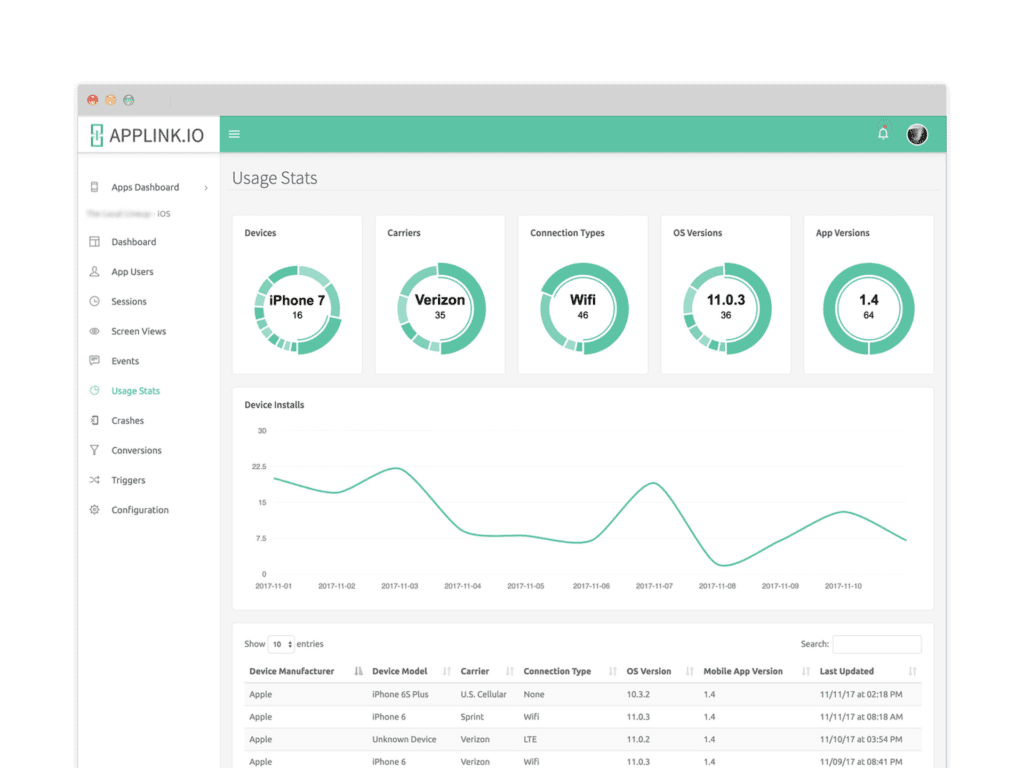
Example AppLink.io usage stats module showing devices, carriers, versions and more
Analyzing usage statistics will give you a better understanding of who your consumers are and their digital preferences. Getting breakdowns across devices, carriers, connection types, operating system, and app versions lets you know how your app is performing every day. Discover users experiencing poor app performance and diagnose the problems quickly.
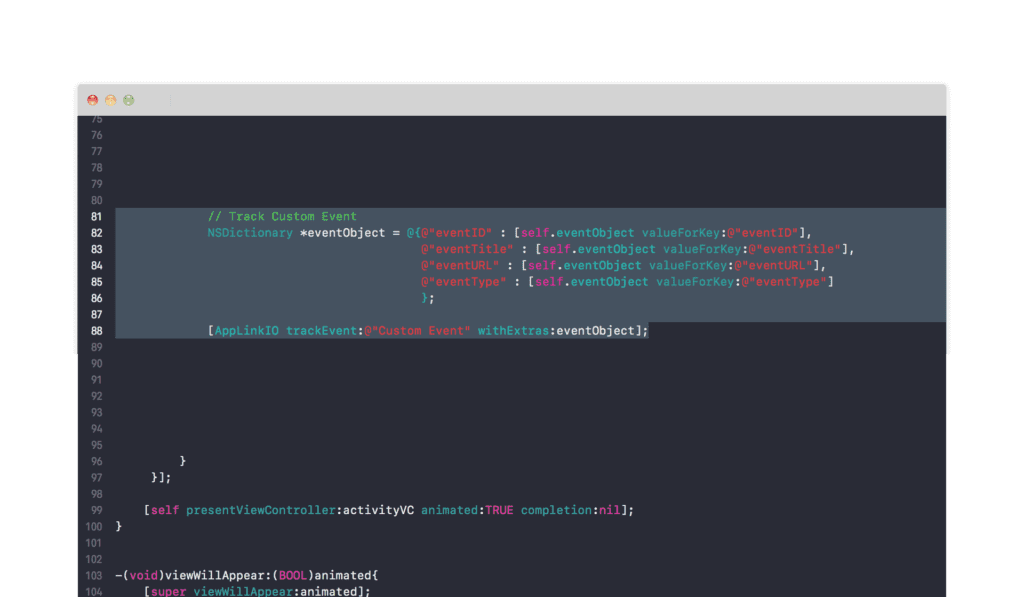
Example AppLink.io SDK method tracking a custom event in iOS
Any action that a user takes can be measured. Usually referred to in the context of in-app events, custom events give you the opportunity to track unique interactions. Once tracked, these events can provide an extra level of clarity about your app.
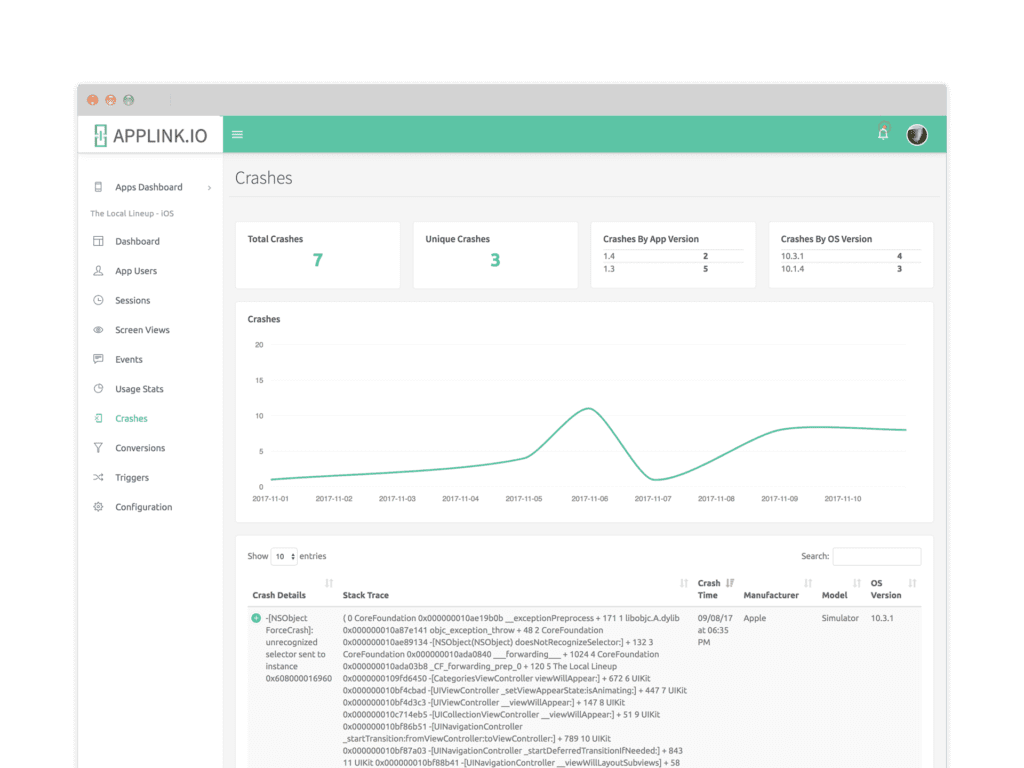
Example AppLink.io crash module showing crash details
Nobody likes it when an app crashes. Tracking crash analytics as well as analyzing stack traces will help you quickly find and fix performance issues. Segmenting crashes by usage metrics can help uncover where a defect might be and get your app up and running fast.
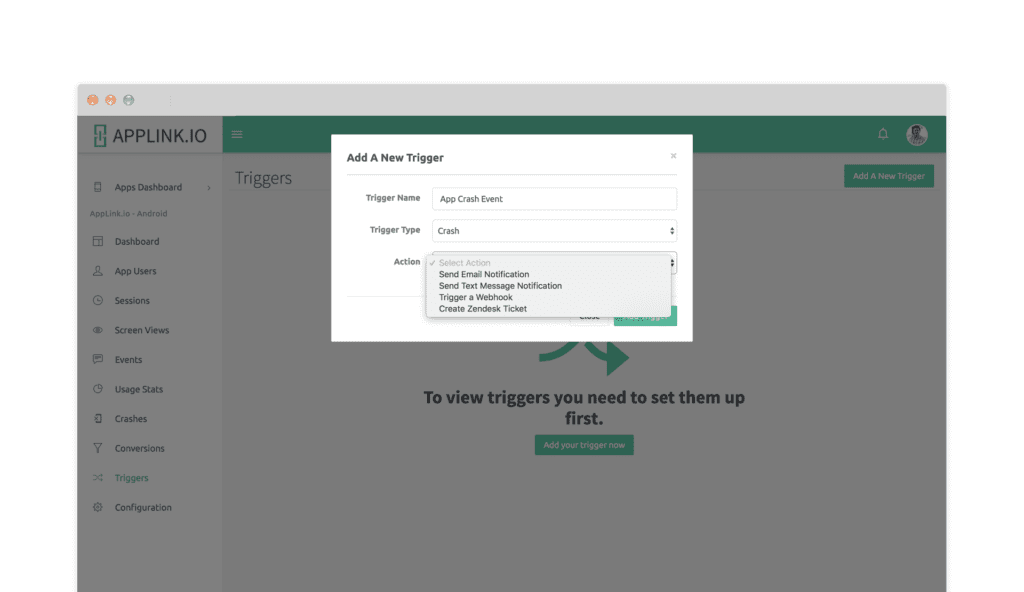
Example AppLink.io triggers module showing a crash workflow
You can’t always be staring at a screen monitoring your app. Everyone needs a coffee break or a day off. It’s important to have an automated system that can trigger workflows and actions based on the good or bad experiences users are having in your app. Email and SMS alerts can notify you about a crash or other adverse event as soon as it happens.
Having the data is the first step, but taking action from insight is a sign of maturity. Mobile APM can provide the foundation to build a decision supporting tool that will help leaders know the performance of their mobile apps, but more importantly, understand the data behind user behavior.
Like mobile apps, the goal behind performance monitoring of a web application should be utilizing the data to take action. Some of the key things that you should be monitoring include web requests and transactions, code-level performance, application dependencies, server monitoring, and log data.
A basic function included in an APM solution should be the ability to review web requests and database transactions. Granted, most of this data can be obtained from a log, but it’s important to understand what requests and transactions are taking place and how they are performing. Being able to identify and isolate slow incidents, can allow you to prioritize which ones to address first.

They say, “The truth is in the code”, and that is particularly true with application monitoring. An APM solution that can get you down to the code level can provide greater insights. Code-level performance profiling can help you understand what functions are being called and how long it takes to perform certain methods.
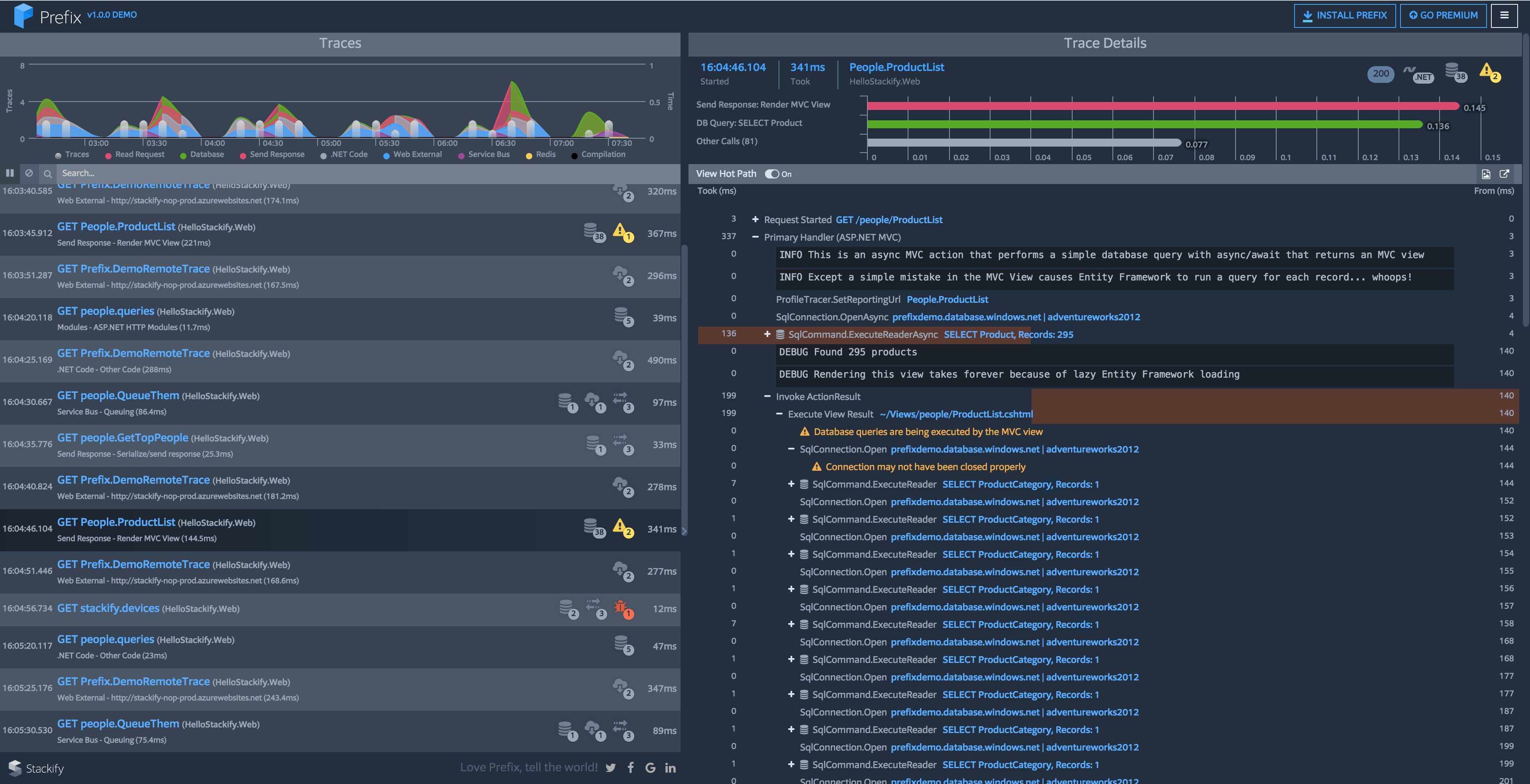
A slow-performing web application can sometimes be attributed to a dependency within your application. Types of application dependencies can include databases, caching, message queues, web services, and HTTP APIs. A good application performance management system can track all of your application dependencies to help understand their performance.

Since the adoption of the cloud, most servers are created in virtualized environments and hosted in data centers. To keep tabs on your server, it’s important to track server CPU and memory usage. In addition to being one of the primary factors associated with costs, heavy CPU usage can be an indicator of needing a larger server or adopting an auto-scaling strategy.

[adinserter block=”33″]
As a developer, whenever something went wrong, the first place I looked were the logs. The problem is that there are logs everywhere for everything. Database logs, server logs, operating system logs … you get it. A centralized logging solution is a key component for a APM solution.
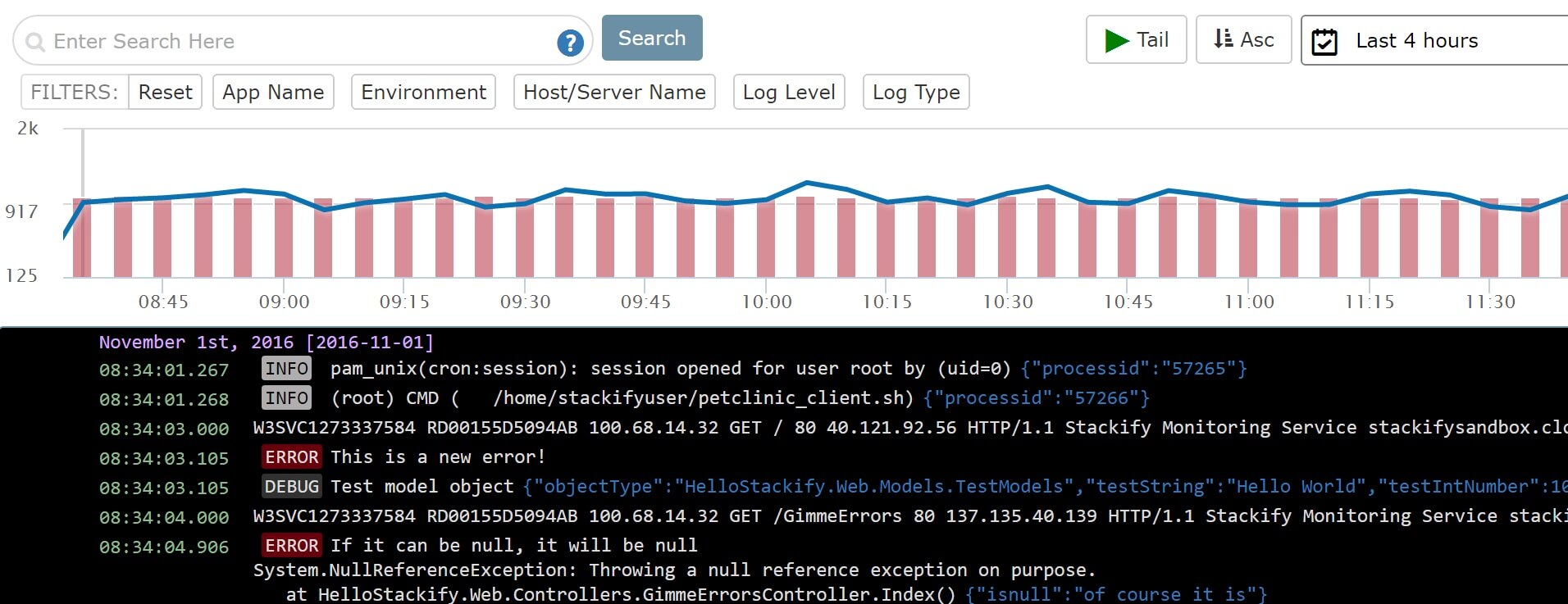
High-performance mobile apps depend on high-performance web applications. Both mobile and web apps have a joint responsibility of providing an exceptional experience for users. If you have a web application that has a dependant mobile app, it’s important to keep both in mind when evaluating APM providers.
AppLink.io is a mobile app analytics tool and marketing platform that provides app statistics, metrics, tracking and monitoring capabilities. AppLink.io provides the foundation to build a decision support tool that will help leaders know the performance of their mobile apps, but more importantly, understand the data behind user behavior. Get started today with a free trial.
Stackify's APM tools are used by thousands of .NET, Java, PHP, Node.js, Python, & Ruby developers all over the world.
Explore Retrace's product features to learn more.
If you would like to be a guest contributor to the Stackify blog please reach out to stackify@stackify.com